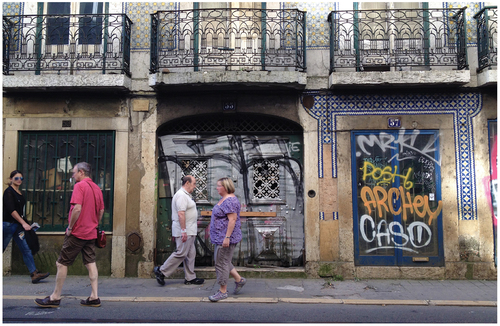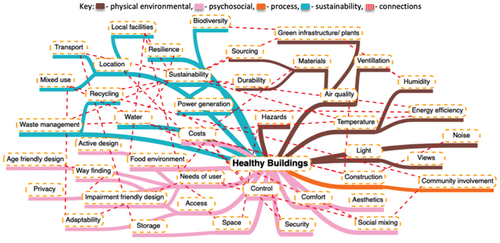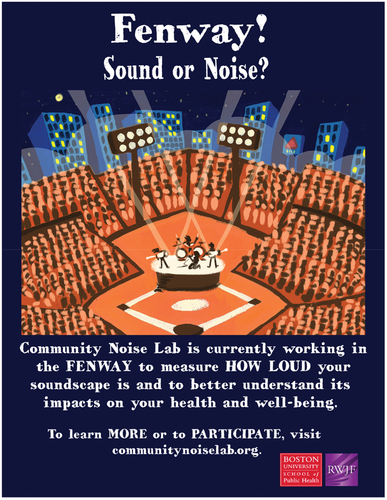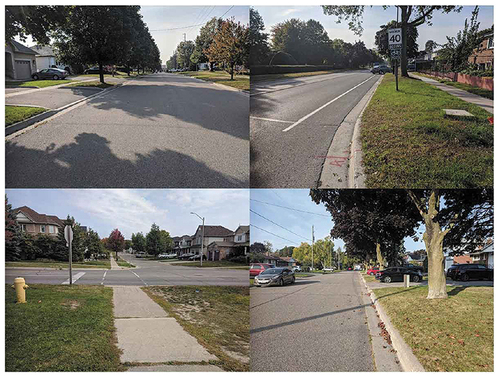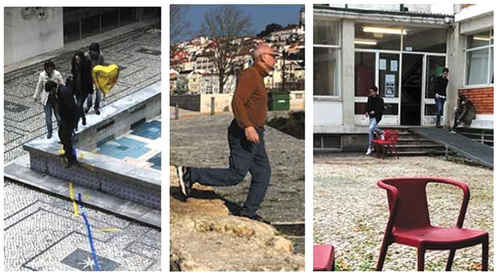SUPPORTING CITY KNOW-HOW
Human health and planetary health are influenced by city lifestyles, city leadership, and city development. For both, worrying trends are leading to increasing concern and it is imperative that human health and environmental impacts become core foci in urban policy. Changing trajectory will require concerted action; the journal Cities & Health is dedicated to supporting the flow of knowledge, in all directions, to help make this happen. We wish to foster communication between researchers, practitioners, policy-makers, communities, and decision-makers in cities. This is the purpose of the City Know-how section of the journal. We invite you to join these conversations. In order to strengthen the community of interest, we would like to include many and varied voices, including those from younger practitioners and people who are supporting health and health equity in everyday urban lives.
This issue of Cities & Health comprises some sixteen articles shedding light on many aspects of spatial planning, design, and governance for urban health.
For our 10 research articles, nine are summarised here in the form of ‘research for city practice.’ This is where you can learn about shared problems and their solutions. The findings from research are outlined here for city and town-based action.
In addition, in this issue, we are proud to highlight three ‘Reflective Praxis – Think-pieces.’ In articles researchers and practitioners share their personal ‘on the job’ learning for others to gain insight into what their experiences.
As a journal we encourage learning by sharing. We welcome those in towns and cities to share their own stories through publishing in our ‘City Shorts’ section. In addition, we are always open to conjecture, commentary and debate arising from practitioners and researchers trying to make human settlements healthier and more equitable for communities, and healthier for the planet.
Communities facing urban depopulation: exploring people’s environmental preferences. A case study of Lisbon, Portugal
Comparing the urban attributes that could halt urban depopulation. Friendly communities and quality green spaces might be the key for population stabilization while simultaneously contributing to health and wellbeing.
For the attention of: UN-Habitat, International Society of Urban Health, Smart Cities World, Urban Futures Research Group, SCiRN™ (The Shrinking Cities International Research Network), Helmholtz Centre for Environmental Research, Lisbon City’s Council.
The problem: Urban depopulation has serious impacts for the wellbeing of urban citizens. Therefore, knowing what urban characteristics might halt this process, by retaining current dwellers and even reversing it and by attracting new residents, is crucial for the future of these cities, and for the support of the wellbeing of these communities.
What we did: We tested preferences regarding different potential future urban neighbourhoods’ scenarios with 130 participants; some of whom were living in depopulating neighbourhoods, some were living in growing neighbourhoods and others were searching for a new house. We analysed and compared their preferences to understand better which urban characteristics would be more important in retaining existing residents and also attracting new residents to an area.
What our study adds: The results showed that residents of depopulating neighbourhoods value the presence of a friendly community more and were less negative about high population densities. House buyers valued environments with good-quality green spaces significantly more than the other two groups.
Implications for city policy and practice: These findings suggest that friendlier communities and better-quality green spaces are key attributes both for encouraging current residents to remain and for attracting new residents to move in. These two attributes are also known to be relevant factors for overall citizens’ quality of life, health and wellbeing; they should, therefore, be given particular consideration in all interventions where depopulation is taking place.
Full research article: Communities facing urban depopulation: exploring people’s environmental preferences. A case study of Lisbon, Portugal
Authors: M. Francisca Lima (@franciscamlima), Catharine Ward Thompson (@CWardThompson), Peter Aspinall & Simon Bell. City Know-how editor: Marcus Grant
Promoting children’s play in cities: a case study of collective impact and municipal leadership from Calgary, Alberta
Children playing jump rope together at a Mobile Adventure Playground location in Calgary. Photo by Candace I. J. Nykiforuk.
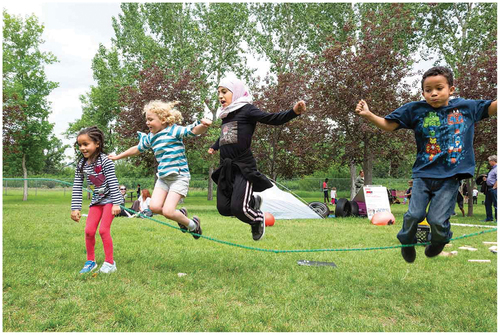
The importance of play on long-term benefits to childhood mental, emotional, and social health cannot be overstated. Ultimately, it will be collective efforts to promote unstructured play that will have the greatest impact on meaningfully impacting overall childhood health and well-being.
For the attention of: City authorities and their parks and recreation agencies. Public health practitioners and others with interests in child development and children’s play.
The problem: Play is key to healthy childhood development, yet, there is growing international concern around decreasing opportunities for children to engage in unstructured, outdoor play. While municipalities are well-situated to take a leadership role in developing play-friendly cities, there are few practice-based examples describing the process.
What we did and why: Together with practice partners from The City of Calgary, the Alberta Parks and Recreation Association, and The Government of Alberta Ministry of Culture and Tourism, we used a case study method to explore how The City of Calgary used a collective impact model to promote and support local play opportunities, specifically by initiating the creation of a Calgary Play Charter.
What our study adds: We describe the preconditions that supported the initiation of a collective impact process. Through this we identify facilitators challenges to municipal leadership across the three core phases the collective impact process.
Implications for city policy and practice: The findings demonstrate the impact of a shared leadership approach and provide direction and key learnings for municipal leaders interested in creating local play opportunities.
Our findings could be used to inform policies and practices at the provincial/state or national levels to bolster local efforts that support and promote play.
Our paper also outlines the city Play Charter vision and highlights the City’s ‘Mobile Adventure Playground’ pilot program as an example of an activity to support and implement the vision.
Full research article: Promoting children’s play in Calgary, Alberta: A case study of collective impact and municipal leadership
Authors: Nicole M. Glenn, Krystyna Kongats, Heather Cowie, Julie K. Guimond & Candace I. J. Nykiforuk (@nykiforuk_c). City Know-how editor: Marcus Grant
An evaluation of bringing public health into architecture education in England
Embedding public health experts into architecture training improved skills, knowledge and awareness amongst architects. A promising way to work towards healthier buildings and places.
For the attention of: Architectural professional bodies, Architects Registration Board, national public health professional bodies, Faculty of Public Health.
The problem: One in six Europeans live in buildings which are contributing to poor health.
What we did and why: The innovative Public Health Practitioner in Residence is one of the first programmes in the world to conduct research into the expansion of the public health workforce into the design professions. We performed a long-term evaluation, to assess the individual and organisational impacts of this programme, to see if it is a model that would be beneficial to roll-out more widely.
What our study adds: This initiative:
Helps to embed public health professionals into architecture training, improving public health skills, knowledge and awareness amongst a cohort of architecture alumni.
Incorporates health concepts into the architecture curriculum maintains impact even when health staff availability is limited.
In practice, creating healthy buildings and places is facilitated by later career stages, larger firms, working on projects in education, residential or healthcare sectors, and on larger sites. Barriers are resources and the understanding of others in the architectural process.
Implications for city policy and practice: The approach to architectural education could be replicated in other educational institutions in the UK, the rest of Europe and worldwide. There are also lessons for other built environment courses.
In academia – looking for opportunistic evaluations of health effects of future developments would add value to architectural education.
In practice – engaging with general public, developers, financiers and land-owners and making health more explicit in regulations would address many of the barriers we found.
Links to other resources:
World Health Collaborating Centre for Healthy Urban Environments
Full research article: Evaluating a workforce development programme: bringing public health into architecture education in England
Authors: Rachael Marsh (@rachaelmarsh), Paul Pilkington (@paulpilkington), Elena Marco (@emarco14), Louis Rice (@DrLouisRice). City Know-how editor: Marcus Grant
How sensitive are urban soundscapes to changes in neighbourhood activities: the case of Fenway, Boston, MA
Repurposing sports stadiums for live concerts puts the neighbourhood at risk of exposure to harmful and disruptive levels of noise.
For the attention of: City planners, general public and community health committees.
The problem: In recent years, open air live concerts are often included as a major part of the summer time entertainment in the urban parks and squares, greatly increasing the sound levels and exposing the residents to potentially harmful noise.
What we did and why: We used noise monitors to record week-long continuous measurements on residential rooftops across Fenway, a location for live concerts in Boston, from March to September 2019. We measured a spectrum of sound metrics to get a full idea of the exposure. We compared the levels during baseball games, live concerts, and no activity to see how live concerts threaten the peace of the neighborhood.
What our study adds: Noise is an under-researched environmental pollutant that disproportionately impacts vulnerable populations. This is the first study that measures the impact of reusing existing structures for open-air concerts. Our study considers multiple-sound metrics that can impact health and travel through urban areas in unique ways.
Implications for city policy and practice: It is crucial that city planners weigh the potential impacts to the local soundscape of reusing any existing structure against the benefit to the community. We developed and implemented a methodology for collecting and analysing sound data to answer these questions. We present a plan for how city officials and urban planners can confront these questions in their communities, not just with live concerts but with other environmental sound issues too.
Links to other resources:
Community Noise Lab is located at the Brown University School of Public Health. The lab’s primary aim is to holistically explore the relationship between community noise and health by working directly with communities to support their specific noise issues using real-time monitoring and exposure modeling. Our smartphone app, NoiseScore, allows users to objectively measure and subjectively describe noise events in their community; community noise surveying via our National Neighborhood Environmental Noise Survey. We also have laboratory-based experiments and community engagement activities.
Full research article: Adaptive reuse and its impacts on the environmental soundscape: the case of Fenway, Boston, MA
Authors: Erica D. Walker (@e_dubya), Nina F. Lee (@ninafranzlee), Koen F. Tieskens, Jennifer M. Cavallari, Claire Schollaert & Jonathan I. Levy (@jonlevyBU). City Know-how editor: Marcus Grant
Active travel and age-friendly neighbourhoods
Is a bike lane enough? What about a multi-use pathway? New research suggests that looking at interventions one at a time may be problematic when trying to remove barriers to active travel in older adults.
For the attention of: Municipal staff and elected officials, urban planners, and active transportation engineers.
The problem: Older adults experience many unique barriers preventing the use of active transportation. Barriers can differ between cities, but also between different neighbourhoods within the same city. Despite the multitude of benefits of active transportation, for both the individual and society, participation is low among older adults. The current approach is to perform interventions that target one barrier; however, that approach may not be adequate in improving participation rates.
What we did and why: Our study linked survey data from local residents with postal code-derived data sets in Canada (CANUE and WalkScore). These provided active transportation ‘friendliness’ scores. Our sample was divided into four neighbourhoods across the same mid-sized suburban city. We compared perceived barriers to the neighbourhood environment. This allowed us to see if actual vs perceived constraints aligned; and what, according to older adults, were the significant barriers to active transportation.
What our study adds: Our novel findings suggest the need for larger scale studies that assess single vs. multiple-intervention targets and their effect on active travel in older adults.
Our focus on older adults allows for more specific interventions to improve age-friendliness of cities.
Our data further highlight some of the major environmental barriers to active travel facing older adults.
Implications for city policy and practice: The implications are clear;
Policy and decision-makers need to be inclusive in their decisions and designs and consider the needs of older adults.
Approaches to active transportation interventions need to take a holistic approach to be truly effective.
Proper interventions need to be effective across many aspects to truly remove constraints.
Links to other resources:
The GeoHealth Network exists to bridge this knowledge gap. We are a community of dedicated graduate students at the University of Toronto, bringing you curated health-geography content.
The Canadian Urban Environmental Health Research Consortium for the understanding urban living and human health
The Walk Score website provides a tool to promote walkable neighbourhoods. It states that walkable neighbourhoods are one of the simplest and best solutions for the environment, our health, and our economy.
Full research article: Constraints to active transportation in older adults across four neighbourhoods: a descriptive study from Canada
Authors: Nicholas O’Rourke & Shilpa Dogra (@DrSDogra). City Know-how editor: Marcus Grant
Urban design: older adults’ preferences and differences by individual and contextual aspects
Car-free walking area with a flat surface for walking, access to stores and shaded benches for resting represents a high quality of stay. Photo by Tanja Brüchert.
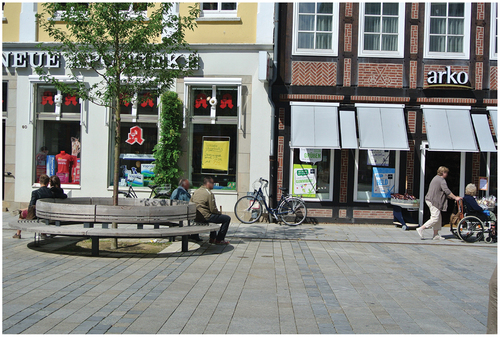
A look at the urban design preferences of older adults from Germany, groups that are often underrepresented in urban planning participatory processes.
For the attention of: Municipalities with less than 100,000 inhabitants, urban planners, transport planners, public health authorities, administrative law authorities
The problem: Some people are more affected by the built environment than others, e.g. frail older adults, pedestrians, or people with low socioeconomic position. A lack of representation of these groups in attempts at age-friendly development creates a risk of increasing environmental health inequalities. Public Health interests need to bring in their expertise on this issue into planning policy and processes. However, knowledge on cross-cutting topics is often scarce, especially in small and medium-sized municipalities.
What we did and why: We conducted a survey of 1,836 older adults aged 65 years and older, in cities and municipalities with under 100,000 inhabitants in northwest Germany. Participants were asked to rate the importance of a range of 21, frequently found, urban design features. We analysed the results to find out which specific characteristics are most important for older adults; also whether there are differences depending on individual or contextual aspects. This is crucial to inform stakeholders about age-friendly design of the built environment.
What our study adds: We found that:
Crime safety was most often rated as very important, although data indicates that older adults are the group least affected by crime.
The greatest difference in design preferences was observed for women, people with low education, the oldest old and actively mobile people; highlighting the importance of considering a diversity of needs in urban planning.
Increasing preference for some design features such as lighting, crossings, separated cycle and footpath and places for all generations increased with the increasing population size (and we assume urban complexity) of a town.
Implications for city policy and practice:
Urban planning needs to make more of opportunities to involve older adults and their views, especially women, people with low education and actively mobile people, in order to prevent environmental health inequalities.
Public health authorities can use our results to assist them in making statements in urban planning procedures to promote age-friendly development.
Cooperation of different stakeholders is recommended to assess concerns and fears of the residents to help increase perceived safety.
Links to other resources:
For more information see material about the AFOOT project.
Full research article: Social determinants of older adults’ urban design preference: a cross-sectional study
Authors: Tanja Brüchert, Sabine Baumgart & Gabriele Bolte. City Know-how editor: Marcus Grant
Making ageing and place work in practice; lessons from Belfast and Curitiba
The search for a more age-inclusive city needs to recognise the power of property development and how older people’s groups need to acquire a more complex set of advocacy tactics in urban planning.
For the attention of: Politicians, especially at local authority and municipality level; Town planners and housing managers making day-to-day decisions about the development of the city; Age-friendly cities and their networks globally; NGOs in the age sector, especially around healthy urban ageing.
The problem: Even though we know that walking is good for older people’s physical and mental health we increasingly plan cities around the needs of young professionals, property development and private profit. Older people have become concentrated in the periphery – where services, connectivity and assets are weak.
What we did and why: Our project is a partnership between Belfast (UK) and Curitiba (Brazil) to look at how cities could be made more walkable for older people. We evaluated how older people walk, using tracking monitors; and how policies in planning regeneration and housing support a more inclusive city. We tested our findings through in-depth interviews and case studies.
What our study adds: Our research highlights the need for integrated programmes, better evidence and stronger advocacy networks to create more socially and demographically balanced communities.
An understanding of the way in which property development models that favour speculative developments for offices, apartments and entertainment precincts, often exclude older people from assets in city centres.
A conceptual understanding of the real-politic of urban policy making and the need for more sophisticated tactics among age-NGOs and community groups.
An understanding of the spatial concentration of older people in suburban neighbourhoods and how such places can be retrofitted in more age inclusive ways.
Implications for city policy and practice: Cities need to acknowledge that;
There need to be stronger participatory processes in planning, urban and transport policy that genuinely include older people’s concerns in the design of the city.
Integrated approaches, especially between physical activity, public health and planning need to coordinate actual investments to produce better housing outcomes for older people.
Community initiatives on loneliness, social exclusion and age-poverty need to be better recognised in mainstream urban policies.
Links to other resources:
Belfast Healthy Cities: Our vision is to be a leader in creating a healthy, equitable and sustainable city
Age-friendly Belfast: An Age-friendly City is defined as an inclusive and accessible urban environment that promotes active ageing
Full research article: Planning for an ageing city: Place, older people and urban restructuring
Authors: Brendan Murtagh (@BrendanMurtagh9), Sara Ferguson (@saraferg89), Claire Lyne Cleland (@cleland_claire), Geraint Ellis (@gellis23), Ruth Hunter (@Ruth_HunterQUB), Ruibing Kou (@RuibingKou), Ciro Rodriguez Añez (@CiroAne), Adriano Akira Ferreira Hino, Leonardo Augusto Becker (@Leo26becker) & Rodrigo Siqueira Reis (@ReisRS70). City Know-how editor: Marcus Grant
Active urbanism. The potential effect of urban design on bone health
Cities are becoming less physically challenging, making residents weak, fragile and dependant on technologies. We aim to bring medical knowledge into urban design.
For the attention of: Urban designers, architect planners, and scientists of the human body and movement
The problem: A wide variety of movement types has been eliminated from urban environment which is designed for lowest agility and ability of movement, even where there is enough space to provide other options. Lack of opportunities, or nudges, to greater exercise may in part lead to, among other problems, bone fragility and osteoporosis across the population.
What we did and why: We studied the evidence to better understand the effect of exercise programs on bone density. Then we designed experiments based on that knowledge. We discovered that jumping from walls and podiums creates three times bodyweight load on legs, this in turn can make bones stronger and postpone osteoporosis.
What our study adds: This study adds a new criteria to consider when designing urban landscapes. Opportunities to jump and step down apply the strain on bones necessary for gaining and maintaining bone density and avoiding osteoporosis, these can be created alongside less intense and more accessible routes.
Implications for city policy and practice: We suggest that there is a need to reconsider the balance between risk of falling now or having bone health deterioration over many years – and provide choice. Designers can creatively use this new license for design incident for the hyper-active. This can be applied through removing barriers around podiums, creating adventurous landscapes in park and boulevards, without affecting accessibility.
Full research article: Active urbanism: The potential effect of urban design on bone health
Authors: Anna Boldina (@AnnaBoldina1), Beatriz Gomes & Koen Steemers (@KoenSteemers). City Know-how editor: Marcus Grant
What is the impact on residents’ cardiometabolic health of Australian neighbourhood design that facilitates low-carbon living?
Shared walking/cycle path with green verge alongside a train line in a medium-density neighbourhood in Melbourne Australia. Photo by Barbara Bok
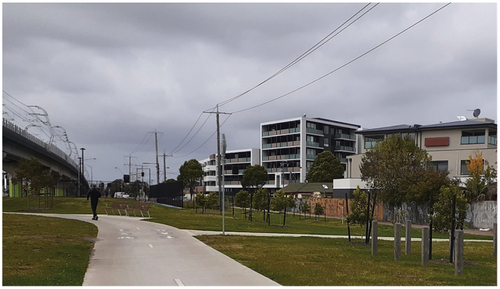
Australian evidence shows that neighbourhoods designed to reduce carbon footprints through facilitating active living could reduce the risk of overweight/obesity.
For the attention of: Municipal planning officers and Directors of Public Health.
The problem: Cardiovascular disease and type 2 diabetes contribute significantly to the global burden of disease. Physical inactivity is a major risk factor of such chronic diseases. Since physical inactivity is partly attributable to the built environment that encourages car-dependent sedentary lifestyles, low-carbon precinct design, which encourages active modes of travel, can enhance population health. Research is needed to synthesise evidence of low-carbon design attributes that can contribute to reducing chronic disease risk.
What we did and why: We reviewed Australian research published since 2000 to identify what features of low-carbon built environments (such as walkability, density, green space, access to destinations) are associated with cardiometabolic health outcomes (including overweight/obesity, hypertension, type 2 diabetes and cardiovascular disease). The goal was to provide city planners and public health practitioners with synthesised evidence on health impacts of built environments to inform the design and retrofitting of neighbourhood environments to be sustainable and health-promoting for residents.
What our study adds: Our review identified specific features of low-carbon built environments associated with reduced risk of overweight/obesity for residents, in particular:
Walkable neighbourhoods (i.e. denser, diverse and connected areas).
Neighbourhoods with mixed land uses (e.g. residential, commercial and other uses).
Neighbourhoods with supportive infrastructure for walking and cycling.
No evidence was found for cardiometabolic health benefits of parks and green space in the context of Australia.
Implications for city policy and practice: Improving the walkability of neighbourhoods, particularly ensuring a mix of land uses, may help to reduce the burden of overweight/obesity amongst Australian adults. Concerted efforts between policymakers across public health, planning and transport sectors are needed to ensure that future urban planning and renewal projects prioritise walkability and related infrastructure to achieve healthy and sustainable cities in Australia.
Links to other resources:
Centre for Urban Transitions, Swinburne University of Technology
Cooperative Research Centres for Low Carbon Living
Heart Foundation – Blueprint for an active Australia
Full research article: Low-carbon built environments and cardiometabolic health: a systematic review of Australian studies
Authors: Nyssa Hadgraft (@nyssahadgraft), Manoj Chandrabose (@ManojBose), Barbara Bok (@barbarabok) and Niki Frantzeskaki (@NFrantzeskaki). City Know-how editor: Marcus Grant

